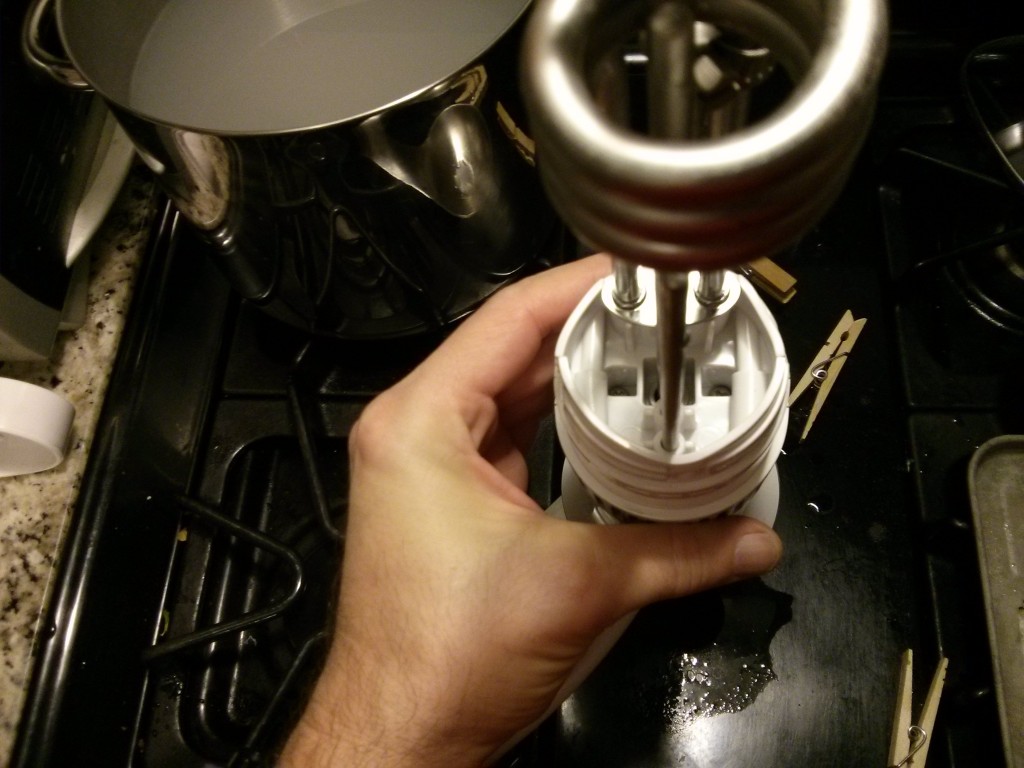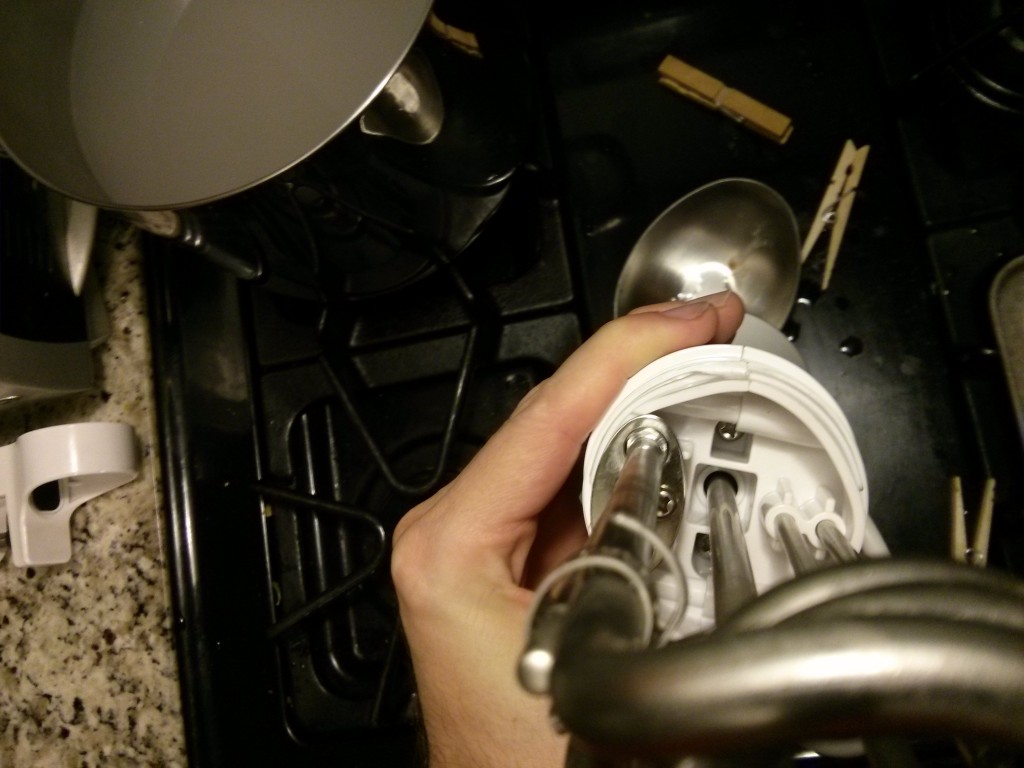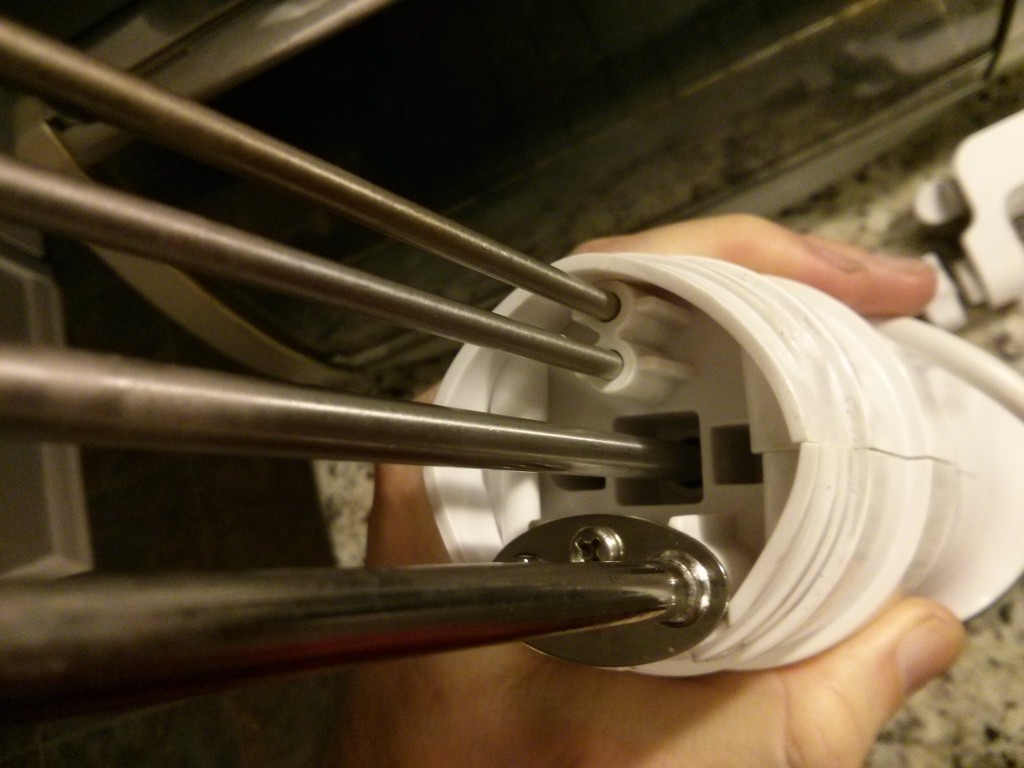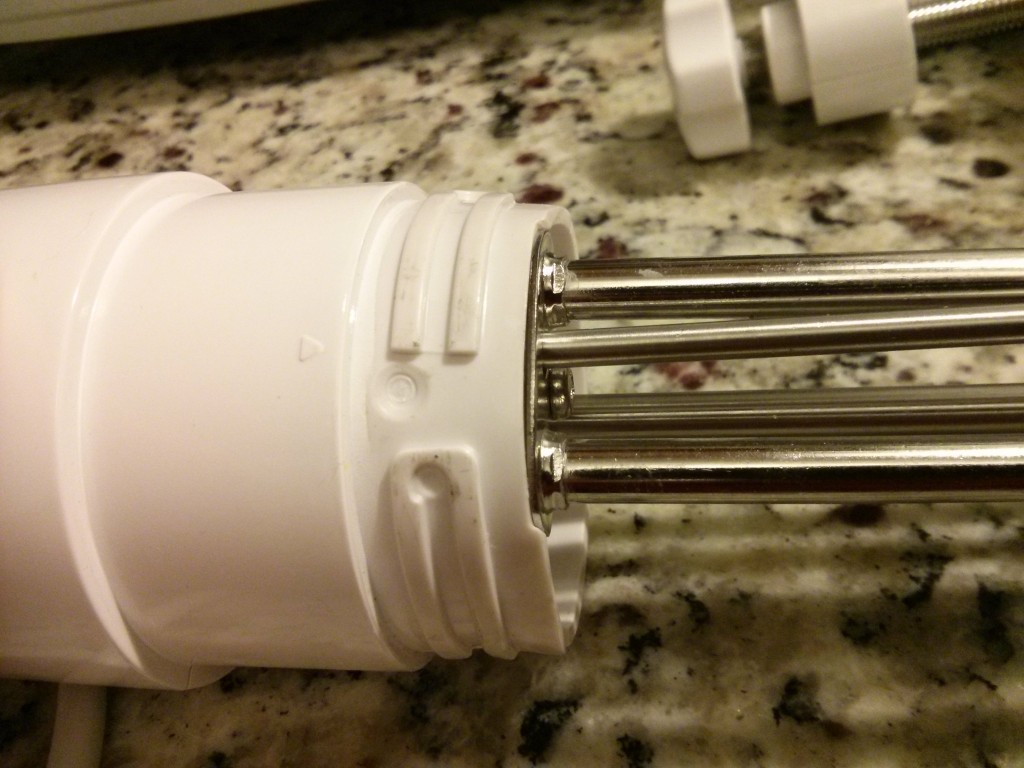I purchased an ANOVA precision cooker (a Sous-vide immersion heater) via their Kickstarter almost a year ago and have been having fun cooking things in water baths. (It makes cooking salmon so very easy….)
My wife told me about a recipe where you simmer a can of sweetened condensed milk in near boiling water for three hours to make Carmel. After my initial “But won’t it explode?” questions were answered (don’t use a pop top can and you are supposedly explosion safe…) I checked my ANOVA’s manual, and sure enough, it listed the Max temperature at 99 C, perfect for keeping water at a very low simmer without having to keep an eye on the range…[1].
Little did I know, the ANOVA can’t actually take being exposed to steaming water for 3 hours.
About 90 minutes into my Carmelization session, the impeller motor started to clatter and buzz a bit. I took it out of the water, and found that the stainless steel shield had slipped off. (“Huh, I must not have put it on all the way the last time I cleaned it”) I replaced the shield (it went on much easier than it should have, but I didn’t notice at the time) and continued making Carmel. The next time I checked, the buzzing noise had started up again, and this time the stainless steel skirt wouldn’t even hold onto the bottom of the plastic unit.
The plastic at the bottom of the ANOVA had melted until the nibs in the skirt would no longer hold in the plastic slots (it otherwise functioned fine, but the skirt is important to keep things from hitting the heating elements or spinning impeller).
I’m not sure if it was conduction of heat traveling up the stainless steel skirt, or the steam rising from inside the skirt that caused the plastic to melt, but it was deformed enough to no longer hold the skirt.
That sucked, but I figured worst case scenario I could fix it in place with a few stainless steel screws to make a FrakenCooker.
Remember how I said that I had purchased it “almost” a year ago? I decided to ask Anova for a replacement as it was conceivably still under warranty, and I hadn’t been doing anything with it I wasn’t supposed to be.
I mean, it IS designed and marketed to be used to cook things in water for long periods of time…and why allow a max temperature of 99 degrees if the plastic can’t actually stand being that hot for multiple hours? You’d think they would have tested the plastic under the max temperature before shipping the unit, right?
So I emailed them describing the problem (I characterized it as “A long high temperature cooking session” as opposed to “I steamed the heck out of your piece of precision equipment”), and after initial confusion about what part melted (they initially thought it was the silicon end piece at the bottom of the skirt, not the main plastic body of the unit) they were nice enough to send out a replacement unit (They wanted to “take a closer look at the problem”.)
The Carmel was delicious, but I won’t be using my ANOVA to cook things hotter than about 60 C in the future. So if you ever receive a firmware update limiting your ANOVA’s max temperature to a lower number…sorry, that was me…
Also, if you are a manufacturer of consumer electronic devices and need them stress tested, I seem to have a knack for using things in ways that expose where design engineers implicitly thought “Surely nobody would do THAT with our product” without actually documenting anywhere what people shouldn’t actually do that with your product.
1. Actually, I didn’t check the manual initially, I just turned the temperature set knob up as high as it would go. But I checked the manual after I melted it, and sure enough, it listed the max temperature as 99C.




I had the same problem, took the same amount of cooking time too although it had been on long enough to warm water twice earlier in the day. Still, I’ve only had it for less than 48 hours, never actually cooked anything with it; literally the first time I put food I intended to eat in it, it fell apart.
Glad to have found this post. I tried using my unit to steam a Christmas pudding, setting the temp to the max (about 210 F) for four hours. The unit allowed that setting, but about an hour later it starting making rattling noises as described. The plastic at the base had warped, and the stainless steel sleeve would not stay in place. It will run with the sleeve off, but that may not be the safe. I would have thought that a device intended to cook food would have been made with heat tolerant plastic.
That was also my belief before it happened to me. Anova replaced mine under warranty, but unless they have switched to high-temp plastic, I think they should set a lower maximum temp value in software.